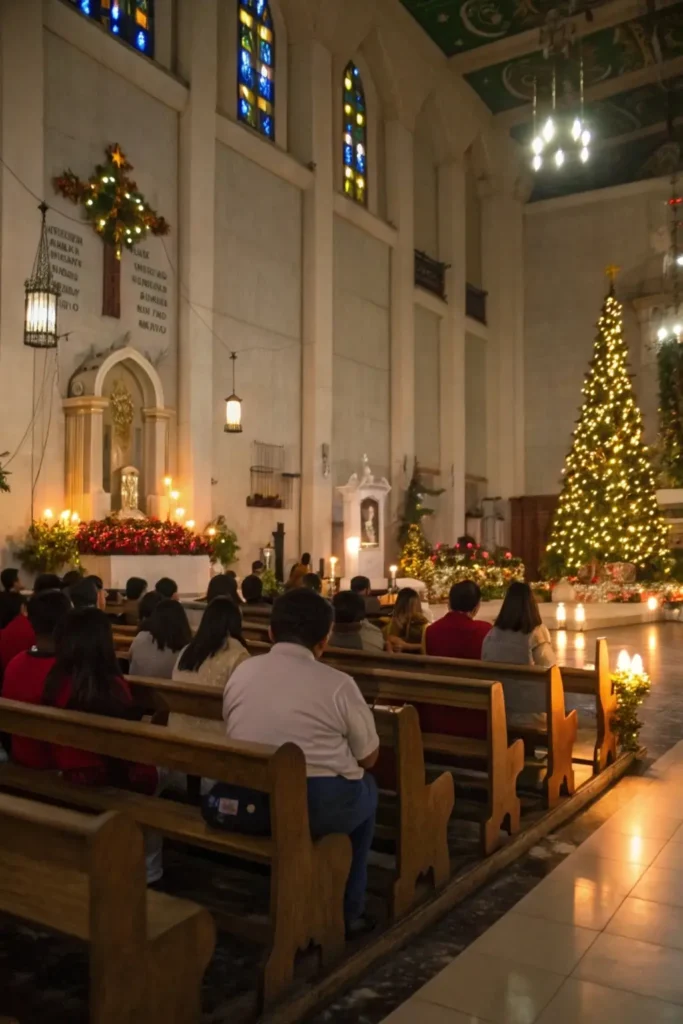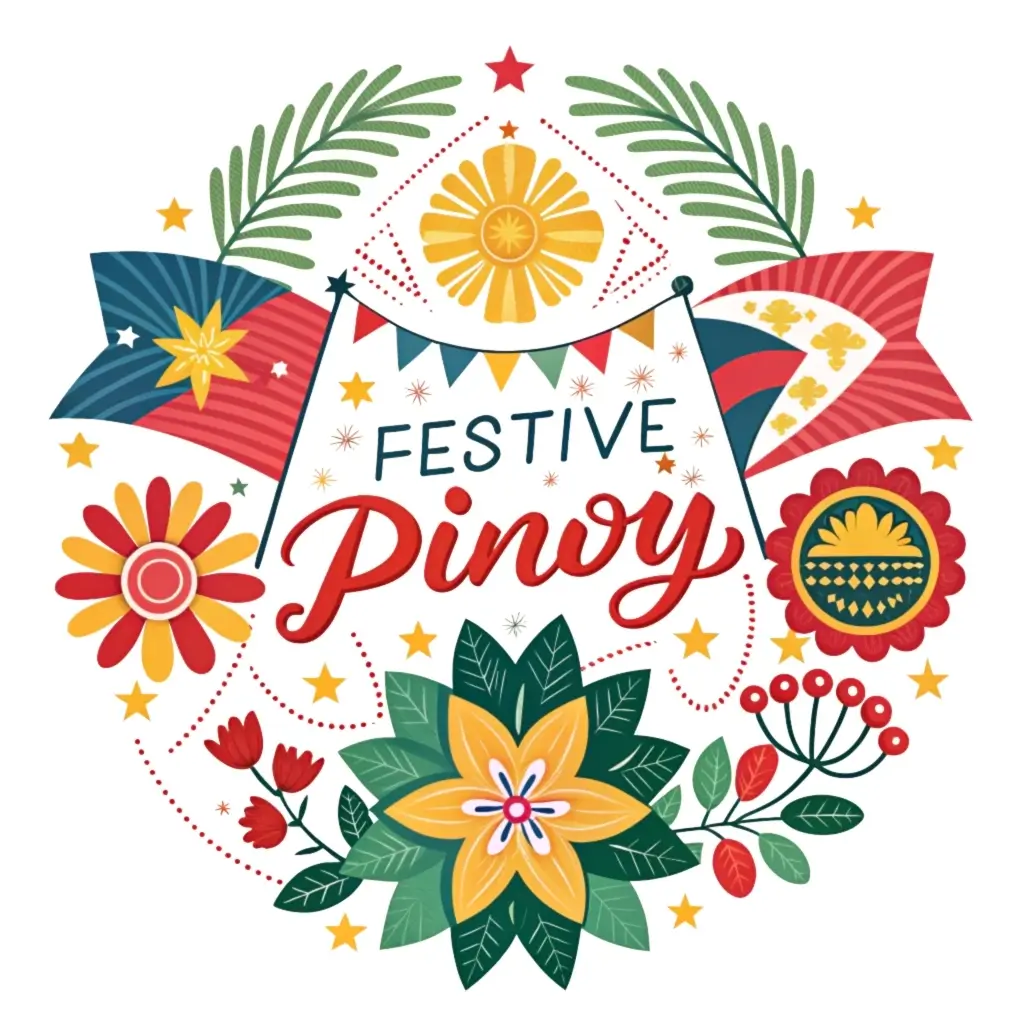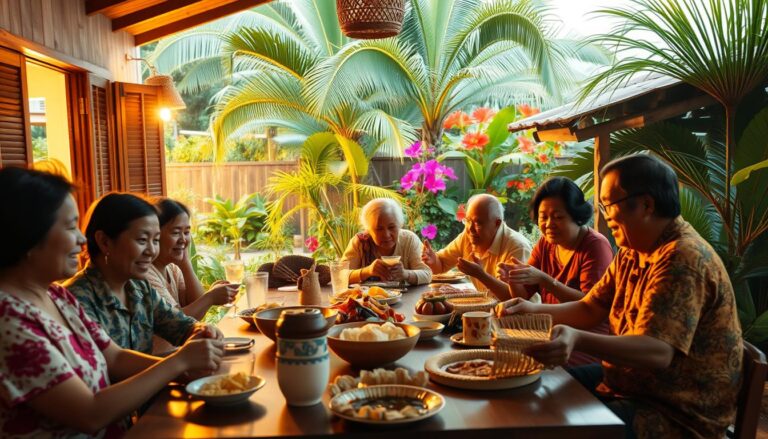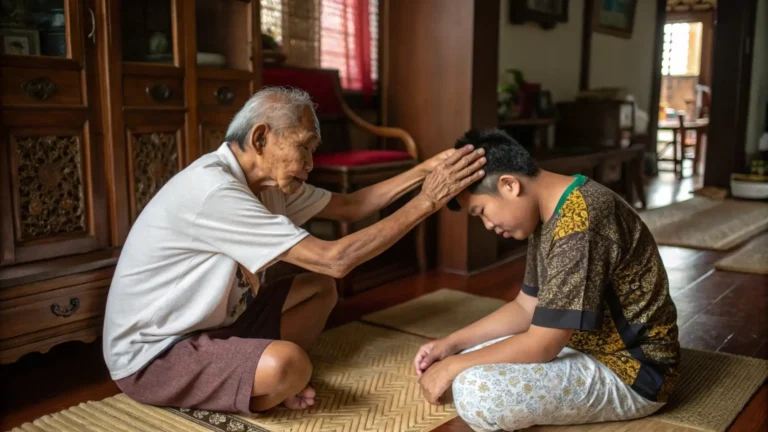Simbang Gabi (Christmas Masses)

Simbang Gabi, or the “Night Mass,” is a special Christmas tradition in the Philippines. Every year, millions of Filipinos celebrate Simbang Gabi, which involves nine days of masses from December 16 to December 24. It is a mix of faith, community, and celebration that helps people prepare for Christmas Day. In this blog, we will explore the history, customs, schedule, and importance of Simbang Gabi in a simple way that everyone can understand.
Simbang Gabi at a Glance
| Aspect | Details |
|---|---|
| Tradition Name | Simbang Gabi (Night Mass) |
| Duration | Nine days, from December 16 to December 24 |
| Timing | Early morning (4:00 or 5:00 AM); evening masses are available in some churches as “anticipated Simbang Gabi” |
| Origins | Began during the Spanish colonial era in the Philippines to allow farmers to attend mass before dawn |
| Purpose | Spiritual preparation for Christmas, demonstrating devotion and community unity |
| Key Customs | Church decorations with parol lanterns, traditional snacks (puto bumbong and bibingka), community bonding, special hymns and choirs |
| Symbolic Themes | Hope, Love, Gratitude, and Forgiveness |
| Settings | Churches (urban and provincial), shopping malls, outdoor spaces, and Filipino communities abroad |
| Special Belief | Many believe completing all nine masses leads to fulfilled prayers or wishes |
| Unique Foods | Puto bumbong (purple rice cake), bibingka (rice cake with salted egg), hot salabat (ginger tea), tsokolate (thick hot chocolate) |
| Significance | Reinforces faith, preserves Filipino culture, encourages sacrifice, and strengthens family and community ties |
| Preparation Tips | Arrive early, dress comfortably, respect traditions, enjoy the food, bring loved ones |
| Audience | Primarily Filipino Catholics, also inclusive of anyone interested in Filipino Christmas traditions |
What Is Simbang Gabi?
Simbang Gabi is a Catholic tradition where people attend early morning masses for nine days in a row, leading up to Christmas Eve. These masses usually start at 4:00 or 5:00 in the morning. For those who can’t wake up early, some churches offer evening masses, called “anticipated Simbang Gabi.” The nine-day practice is a way to show dedication, and many believe that completing all the masses is a sign of strong faith.
Origins of Simbang Gabi
Simbang Gabi began during the Spanish colonial times in the 17th century. Back then, farmers had to wake up very early to work in the fields. To make it easier for them to attend church, the priests decided to hold the masses before dawn. This allowed the farmers to pray and then start their work without delay. Over time, this became a yearly tradition that stands for devotion, sacrifice, and waiting for the birth of Jesus.
Simbang Gabi is also a way to pass down faith and culture from one generation to the next. It is not just about getting ready for Christmas spiritually, but also about keeping families and communities close.
Schedule of Simbang Gabi
Here is a simple table showing the schedule for Simbang Gabi:
| Date | Mass Time |
|---|---|
| December 16 | 4:00 AM |
| December 17 | 4:00 AM |
| December 18 | 4:00 AM |
| December 19 | 4:00 AM |
| December 20 | 4:00 AM |
| December 21 | 4:00 AM |
| December 22 | 4:00 AM |
| December 23 | 4:00 AM |
| December 24 | 4:00 AM |
These masses are a special part of the Advent season, counting down the days until Christmas. Each mass helps people get more excited and spiritually ready for the big celebration on December 25.
Customs and Traditions

Simbang Gabi is not just about attending mass; it’s also about people coming together. The atmosphere during Simbang Gabi is warm, hopeful, and joyful. Here are some common customs:
1. Church Decorations
Churches are beautifully decorated, often with parol (Christmas lanterns). The parol represents the Star of Bethlehem, which led the Wise Men to baby Jesus. These lanterns are usually made of bamboo and colored paper or plastic. During Simbang Gabi, the churches glow with these colorful lanterns, making them look magical and festive.
2. Puto Bumbong and Bibingka
After each mass, people gather outside to enjoy traditional Filipino snacks like puto bumbong (a purple rice cake steamed in bamboo) and bibingka (a rice cake with salted egg and cheese). These treats are a big part of Simbang Gabi, adding warmth to the early mornings. Vendors set up stalls near the churches, and the smell of these snacks fills the air. People also enjoy hot salabat (ginger tea) or tsokolate (thick hot chocolate).
3. Community Bonding
Families and friends often attend Simbang Gabi together. It’s a time for everyone to catch up, bond, and pray. For many, this tradition makes relationships stronger. The masses usually end with people greeting each other and wishing everyone a Merry Christmas. The sense of community is very strong, as people of all ages come together to celebrate.
4. Choirs and Music
Music is an important part of Simbang Gabi. Church choirs sing special hymns that celebrate the joy of the season. The singing and music make the masses lively and festive, encouraging everyone to join in. The Christmas carols sung during Simbang Gabi are full of messages about hope, peace, and love.
| Tradition | Description |
|---|---|
| Church Decorations | Churches are adorned with colorful “parol” lanterns, symbolizing the Star of Bethlehem and creating a festive and spiritual ambiance. |
| Puto Bumbong & Bibingka | Traditional snacks enjoyed after each mass, such as purple rice cake and bibingka (rice cake with salted egg), along with hot ginger tea or chocolate. |
| Community Bonding | Families and friends attend together, strengthening bonds and celebrating the season with community greetings and joy. |
| Choirs & Music | Church choirs sing Christmas hymns, enhancing the festive atmosphere and encouraging everyone to participate. |
Symbolism of Simbang Gabi
Simbang Gabi symbolizes the waiting and preparation for the birth of Jesus. It is a way for people to show their devotion and make special requests to God. Many believe that if you complete all nine masses, your prayers or wishes may come true. The idea is that sacrifices, like waking up early for nine days, will be rewarded by God.
| Theme | Symbolism/Focus |
|---|---|
| Hope | Encouraging optimism and trust in faith |
| Love | Emphasizing compassion and kindness |
| Gratitude | Reminding people to be thankful |
| Forgiveness | Inspiring forgiveness and reconciliation |
The masses focus on themes like hope, love, and gratitude. Each day, the readings and homilies (sermons) remind people about being kind, generous, and forgiving. Simbang Gabi encourages everyone to practice these values, not only in church but also in daily life, which helps to build a caring community.
Simbang Gabi in Different Settings
Simbang Gabi is usually held in churches, but it is also celebrated in other places:
- Urban Churches: In cities, masses are often held in big cathedrals or even in shopping malls to make it easier for busy people to attend. Evening masses are also offered for those who have to work during the day.
- Provincial Communities: In the countryside, masses are celebrated in small chapels or even outside. The atmosphere is more personal, with neighbors greeting each other and coming together to celebrate.
- International Filipino Communities: Filipinos who live abroad also celebrate Simbang Gabi. Churches in countries like the United States, Canada, and parts of Europe hold special masses for Filipinos. This helps them feel connected to home, especially during the holidays when they may miss their families. It’s also a chance to share Filipino traditions with people from other countries.
| Celebrations in smaller chapels or open spaces, foster a close-knit, community-focused experience. | Description |
|---|---|
| Urban Churches | Masses held in cathedrals or shopping malls, with evening options for those who can’t attend early morning. |
| Provincial Communities | Masses are held in cathedrals or shopping malls, with evening options for those who can’t attend early morning. |
| International Settings | Filipino communities abroad host special masses to connect with home and share the tradition with other cultures. |
Why Is Simbang Gabi Important?
Simbang Gabi is important for Filipinos because it keeps faith at the center of Christmas. It reminds people to take a break from their busy lives and focus on the true meaning of the holiday. Besides its religious importance, it is also a cultural tradition that keeps Filipino customs alive from one generation to the next.
For many, Simbang Gabi is also about sacrifice and discipline. Getting up early for nine days in a row is not easy, especially for those who have work or school. This effort is a sign of dedication and represents the spirit of giving that is at the heart of Christmas.
How to Participate in Simbang Gabi
If you want to experience Simbang Gabi, here are some tips:
- Arrive Early: Churches can get crowded, so it’s good to arrive 15 to 30 minutes before mass starts. This will help you get a good spot.
- Dress Comfortably: It can be chilly in the early morning, so wear a light sweater. Also, remember to dress modestly to show respect for the mass.
- Respect Traditions: Simbang Gabi is a solemn event. Be part of the prayers and follow the customs. Avoid using your phone during mass and pay attention.
- Try the Food: After mass, don’t miss the chance to try puto bumbong and bibingka. These snacks are part of the experience, and sharing them with family and friends makes it even more special.
- Bring Loved Ones: Attending Simbang Gabi with family or friends makes it even better. The joy of praying together and enjoying treats afterward makes wonderful memories.
| Tip | Description |
|---|---|
| Arrive Early | Arrive 15–30 minutes before mass to secure a good spot. |
| Dress Comfortably | Wear a light sweater for cool mornings and dress modestly to show respect. |
| Respect Traditions | Follow customs, avoid phone use during mass, and stay attentive. |
| Try the Food | Enjoy local treats like puto bumbong and bibingka, which are part of the experience. |
| Bring Loved Ones | Attending with family or friends adds joy and makes special memories. |
Conclusion
Simbang Gabi is a beautiful part of the Filipino Christmas spirit. It shows faith, hope, and the importance of community. Whether you are in a busy city or a quiet village, Simbang Gabi helps people connect to their faith and to each other. It is a tradition that has lasted for many years, helping Filipinos welcome Christmas with hearts full of gratitude and joy.
Simbang Gabi is more than just a religious tradition. It also has a big cultural and social impact. It reminds everyone of the real meaning of Christmas sharing love, being generous, and spending time with loved ones. The early mornings, the tasty food, the beautiful music, and the colorful parols all make Simbang Gabi a truly special experience.
Have You Experienced Simbang Gabi?
If you have attended Simbang Gabi, we would love to hear your favorite memories in the comments below. For those who are new to this tradition, we hope this guide encourages you to join in. Whether it’s your first time or something your family has always done, Simbang Gabi is a wonderful way to grow in faith, feel close to your community, and enjoy the spirit of Christmas.






